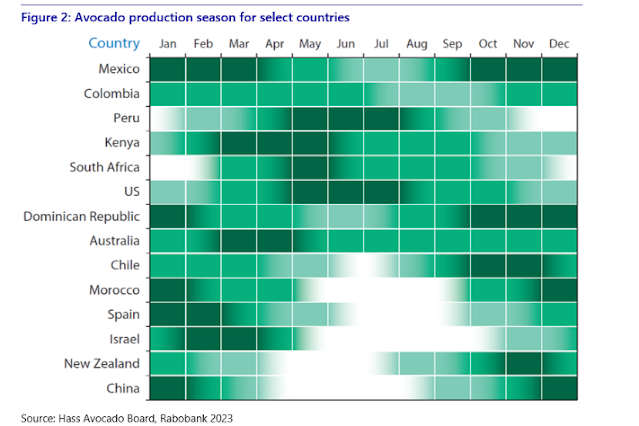When we start to mention out the various varieties of the passion family, we do not leave out sweet granadilla. A tropical fruit with yellow tough skin with small black seeds on the inside. One of the fruits you should be planning to harvest from you own farm in 2024. It is sweet, it has a unique flavor, it is rich in vitamins and antioxidants, and can raise a good amount for you if taken as an agribusiness venture. I don’t see any reason why it shouldn’t be in your budget.
 |
| Sweet Granadilla Farming in Kenya. |
Beyond
its sweet taste, sweet granadilla has potential medicinal properties and has a
low acid content which makes it such a wonderful fruit, unique from other
passion varieties. The consumption of sweet granadilla in Kenya has been
steadily increasing in the urban markets and among health-conscious consumers
holding immense potential for agribusiness.
We
have soo many potential farmers who do not turn to actual farmers because they
lack information to take up a particular venture they are interested in. You
are a lucky reader as I am about to equip you with all the information that you
need to start up this venture and answer some of the most asked questions about
sweet granadilla farming which may be bothering you as well.
Ideal climate and soil requirements for sweet granadilla farming.
Sweet
granadilla thrives in specific climatic conditions, favouring regions with
moderate temperatures and consistent rainfall like Meru, Embu, Tharaka Nithi,
Nyamira, Kisii and parts of the Rift valley. Sweet granadilla can withstand
many soil types, but it mostly prefers well-drained, loamy soils that allow
their root systems to breathe and ensure efficient nutrient absorption. Ideal
climatic and soil requirements are a foundation to successful granadilla
farming.
Step by step process of planting and caring for sweet granadilla plants
 |
| Sweet granadilla seedlings ready for sale at Richfarm Nurseries |
The process begins with selecting healthy seeds or seedlings from certified sources like Richfarm Kenya among other sources. Call 0724698357/0723213602 to order healthy ready to plant seedlings. Planting is typically done during the rainy season, an ideal timing that allows the plants to establish robust root systems. While planting, adequate spacing is crucial for proper growth. Once the planting is done, regular watering while avoiding creating a waterlogged environment is essential for the granadilla plants. Mulching and fertilization contribute to healthy vines and bountiful harvest. On a previous article on sweet yellow passion farming, check out a detailed step by step process for planting. It is the same for Sweet Granadilla. Read: Sweet yellow passion farming in Kenya.
Maturity period of sweet granadilla.
 |
| Granadilla fruits. |
Let
us now get to answer some of the most asked questions about sweet granadilla
farming in Kenya.
1.
What soil is best for sweet granadilla
farming?
Well-drained,
loamy soil is preferred for sweet granadilla farming though the plant can adapt
to other various soil types.
2.
What climatic conditions are ideal for
sweet granadilla farming?
Conditions
with moderate temperatures and consistent rainfall are ideal for the growth of
the fruit.
3.
What is the recommended pH range for the
soil?
Sweet
granadilla thrives best in soils with a slightly acidic to neutral pH ranging
from 6.0 to 7.0. The Ph can only be monitored through regular soil testing.
4.
How do you plant sweet granadilla seeds
or seedlings?
Planting
is done during the rainy season. You can sow seeds or ready seedlings.
5.
Where do I get ready to plant seedlings?
You
will get healthy ready to plant seedlings from certified nurseries like
Richfarm Kenya. You just need to call or whatsapp them at 0724698357/0723213602
and place your order.
6.
What care practices are essential for the
growth of the fruit?
The
most important care practices that ensure you harvest the most from your sweet
granadilla plantation are regular watering during the entire process, mulching,
balanced use of fertilizers and pruning when need be.
7.
How long does sweet granadilla take to
bear fruits?
It
takes an average of 12 months from planting and 50 to 65 days after flowering.
8.
How do I know when my fruits are ripe?
The
tough outer skin of the fruit will turn from green to a vibrant yellow-orange
colour. At this stage the fruits have sweetness at its peak.
9.
How long do the granadilla vines live?
Sweet
granadilla is short lived. Its lifespan is averagely 5 years though it may
occasionally live longer.
10. What
market opportunities exist for sweet granadilla farmers?
Urban
markets and health-conscious consumers are increasingly embracing sweet
granadilla.
11. What
challenges should farmers be aware in sweet granadilla farming?
Pests
and diseases is one of the most common challenges in this venture alongside
adverse weather conditions. Implementing proper pest control measures, disease
management, and monitoring weather patterns are essential for a successful venture.










.jpeg)








